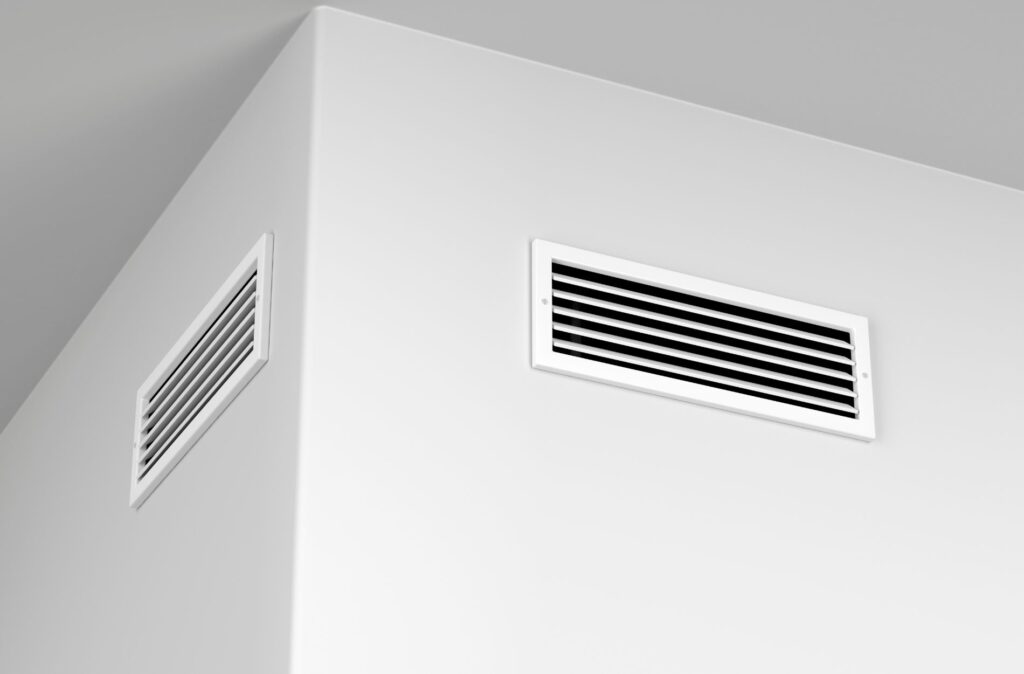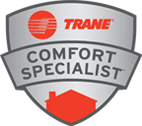Indoor air quality and energy efficiency are paramount when considering the home performance of residential, commercial, and new construction properties. One effective solution for maintaining a healthy and comfortable indoor environment while controlling energy consumption is the use of Energy Recovery Ventilators (ERV).
Energy Recovery Ventilators are designed to bring fresh, filtered outdoor air into your property while simultaneously exhausting stale indoor air. The core function of an ERV system is its ability to transfer the energy contained in the outgoing air to the incoming air, which helps regulate temperature and humidity levels within the building. As a result, ERV systems provide a continuous supply of fresh air while mitigating the energy loss associated with heating or cooling the incoming air.
Incorporating an ERV system into your property’s heating, ventilation, and air conditioning (HVAC) setup can deliver a range of benefits for occupants, including improved indoor air quality, enhanced comfort, and reduced energy consumption, leading to lower energy bills. Furthermore, ERV systems are adaptable to various property types, making them a viable choice for residential, commercial, and new construction projects.
Cool Tech Mechanical’s experienced technicians provide expert guidance and support in choosing the right ERV system for your property while ensuring proper installation and maintenance. Let’s delve into the specifics of ERV systems, their advantages, and how you can optimize your property’s home performance by integrating an Energy Recovery Ventilator.
Understanding How Energy Recovery Ventilators Work
1. Heat Exchange Process
The primary function of an ERV system lies in its heat exchange process. As the outgoing stale air passes through the heat exchanger, it transfers its heat energy to the incoming fresh air. During colder months, this process preheats the incoming air, reducing the need for additional heating, while in warmer months, it precools the incoming air, easing the cooling load on your HVAC system.
2. Humidity Control
Apart from transferring heat energy, ERV systems also help regulate humidity levels within your property. In heat exchange, moisture is transferred between the outgoing and incoming air, maintaining a balanced indoor humidity level. This feature is particularly beneficial for those living in areas with high humidity, as it effectively prevents excess moisture buildup inside the building.
3. Air Filtration
ERV systems are equipped with air filters that capture dust, allergens, and other pollutants from the incoming outdoor air. This ensures that only clean and fresh air is circulated throughout your property, thus contributing to a healthier and more comfortable living environment.
Key Advantages of Energy Recovery Ventilators
1. Improved Indoor Air Quality
With a constant supply of fresh, filtered air, an ERV system significantly enhances indoor air quality by reducing indoor pollutants, allergens, and odors. This results in a cleaner and healthier indoor environment, which is beneficial for people with allergies or respiratory issues.
2. Enhanced Comfort
ERV systems help maintain a consistent and comfortable indoor temperature by reducing temperature fluctuations. Additionally, they assist in regulating indoor humidity levels, further contributing to the overall comfort of your property.
3. Energy Efficiency
By transferring heat energy between the outgoing and incoming air, ERV systems significantly reduce your HVAC system’s heating and cooling loads. This leads to lower energy consumption and, subsequently, reduced energy bills.
4. Environmentally Friendly
Since ERV systems help lower energy consumption and contribute to a smaller carbon footprint, making them an environmentally friendly solution for your property’s heating, ventilation, and air conditioning needs.
Selecting the Right ERV System for Your Property
1. Property Size and Type
When determining the appropriate ERV system, consider the size and type of your property, including the number of rooms and occupants, and whether it is a residential, commercial, or new construction project. Our technicians can guide you through these factors and recommend the most suitable ERV system for your specific needs.
2. Climate
Your location’s climate will also impact an ERV system’s performance. In areas with extreme temperature swings or high humidity levels, the efficiency of ERV systems can be further enhanced. Our professionals will consider the local climate and its implications when advising on the best ERV system for your property.
3. Integration with Existing HVAC System
Depending on your property’s existing HVAC setup, you may need to evaluate whether an ERV system can be seamlessly integrated or if additional upgrades are necessary. Our technicians can assess your current system and recommend the most effective and cost-efficient solution for integrating an ERV system.
Professional Installation and Maintenance of ERV Systems
The performance of your ERV system greatly depends on proper installation and regular maintenance. Our experienced technicians offer expert installation services to ensure the optimal functioning of your ERV system. We also provide ongoing support and maintenance, including filter replacement and system inspection, to guarantee your ERV system’s long-term performance and efficiency.
Conclusion
Energy Recovery Ventilators offer a valuable solution for improving indoor air quality and energy efficiency in residential, commercial, and new construction properties. Choosing the appropriate ERV system and ensuring proper installation can achieve a healthier, more comfortable, and environmentally friendly living or working environment. Let our professionals at Cool Tech Mechanical help you make an informed decision about the right ERV system for your property. Contact us today to learn more about our HVAC service in Arlington, TX, schedule a consultation, and take the first step toward optimizing your property’s home performance.







